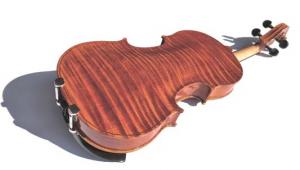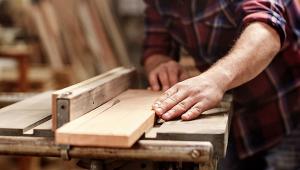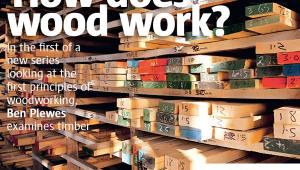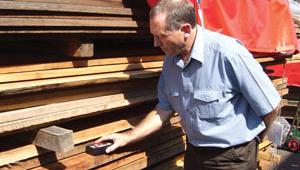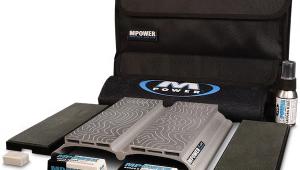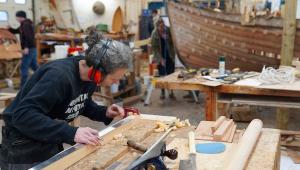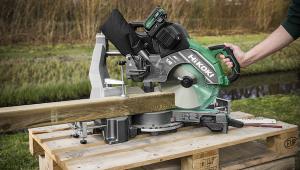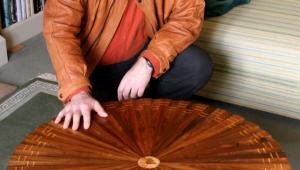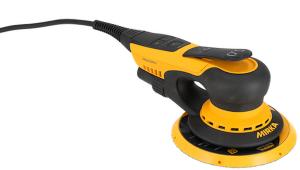An introduction to air and kiln drying
The exposed end grain is often treated to prevent the ends of the board drying out too quickly, which would cause the timber to split. A disadvantage with air drying is that it can leave the timber open to attack from wood boring beetles while it’s drying, often for several years.
Hopefully I’ve convinced you that knowing the moisture content of the timber you are about to use is important, so how do we go about measuring it? There are three practical methods of measuring moisture in wood.
1. Physically weighing the timber before and after drying it and calculating the MC.
2. Using a pin type meter which measures the electrical resistance of the timber.
3. Using a meter that utilises electro-magnetic field technology.
Method 1: The first method involves a fair bit of time and effort but little cost. Cut a small sample of the timber, about an inch long. Accurately measure the weight of the wood in grams to determine its ‘wet weight’. Completely dry the sample by placing it in an oven set to 100degreesC until it reaches its "dry weight"; this may take a couple of days.
To work out the moisture content;
MC% = wet weight - dry weight / dry weight x 100
An advantage of this method is that it will measure the moisture content even if it is very high; most moisture meters have a maximum reading of about 30%MC.
Method 2: The second method measures the electrical resistance of the timber, two pins are applied to the wood and a small current is passed through the timber; the reading gives the moisture content. This gives an instant reading but unless care is taken the machine will not produce accurate results. Just pressing the pins into the surface of the timber will give a consistently low reading. A more accurate reading is obtained by cutting a section off the timber, ideally at least eight inches from the end, then measuring the heart of the wood on the cut surface. This method does give a more accurate reading.
Temperature is usually a factor with pin type meters; the meter is normally set to measure moisture at 70 degrees Fahrenheit (this is the temperature of the timber, not the air temperature). If the wood is at a different temperature, the actual moisture content needs to be read on a temperature adjustment table. Chemical treatment of the timber, wood preservatives for instance, can affect the reading as can surface moisture which may not necessarily be visible. Pin meters come into their own with particularly rough timber and timber which doesn’t have a flat face.
Temperature is usually a factor with pin type meters; the meter is normally set to measure moisture at 70 degrees Fahrenheit (this is the temperature of the timber, not the air temperature). If the wood is at a different temperature, the actual moisture content needs to be read on a temperature adjustment table. Chemical treatment of the timber, wood preservatives for instance, can affect the reading as can surface moisture which may not necessarily be visible. Pin meters come into their own with particularly rough timber and timber which doesn’t have a flat face.
Pressing the Timber Check pins into the timber gave me a reading of 12%. I then drove a couple of pins into the block and the measurement increased to 14%. This reading needed converting into the actual moisture content by looking up the adjustment tables. Looking at the species adjustment tables there is no adjustment to be made when measuring European oak. However the temperature of the timber was 10 degrees Centrigrade, so I compensated for the low temperature by using the wood temperature adjustment tables. The 14% meter reading thus converts to 15.9% MC.
I tried the same procedure on a block of beech. The Wagner measured 13.1%MC whilst the Timber Check gave a measurement of 13.7% MC, once corrected for temperature and species. As you can see, both meters gave very similar measurements.
- Log in or register to post comments
